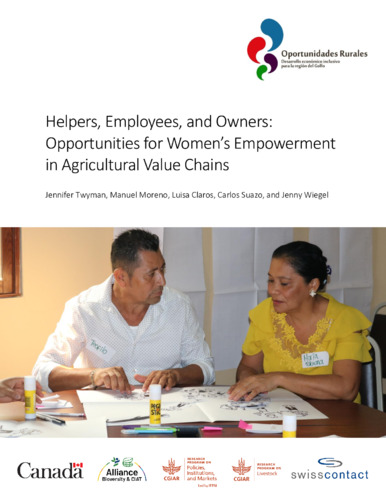Helpers, employees, and owners: Opportunities for women’s empowerment in agricultural value chains
Rural development projects face the challenge of meeting multiple goals such as reducing poverty and empowering women and/or reducing gender inequalities. Many projects focus on value chains, specifically on increasing women’s participation to increase their incomes, thus empowering women and reducing poverty. However, there are few studies that have compared women’s empowerment in different value chains or across different nodes of value chains or by women’s roles in them for Latin America. In this study we examine different indicators of women’s empowerment between the production and processing nodes of two agricultural value chains - cashew and dairy - to better understand if/how women’s participation in value chains is related to their empowerment. We use both qualitative and quantitative data, to address this issue. The quantitative data comes from four intra-household surveys that sampled households participating in each of the nodes and value chains (i.e. cashew production, cashew processing, dairy production, and dairy processing). The surveys include data about the households, agricultural production, processing activities, and indicators of women’s empowerment (using A-WEAI). Qualitative data includes information about family participation in productive tasks, decision making, asset ownership, and beliefs about appropriate behavior and activities of men and women and their contributions to production within the value chains. Qualitative data was collected through interviews, participatory workshops, and focus group discussions. The results suggest that levels of empowerment differ (as measured by A-WEAI) between the value chains and across the different nodes of the value chains. For example, women in the processing nodes have lower levels of empowerment than those in the production nodes. This is contrary to the common assumption that women’s empowerment would be higher in the processing node because the employment opportunities are greater. Closer examination of the different indicators comprising the empowerment index for the different groups shows that women in the processing nodes face greater time burdens associated with employment, which contributes to a lower empowerment index score for these groups.

